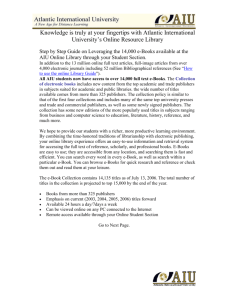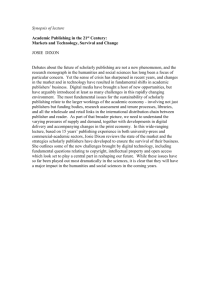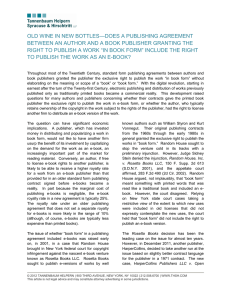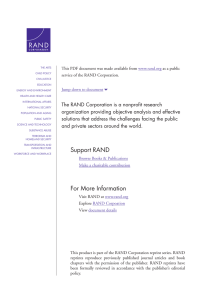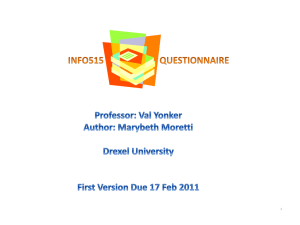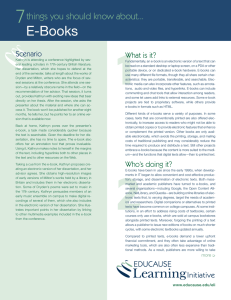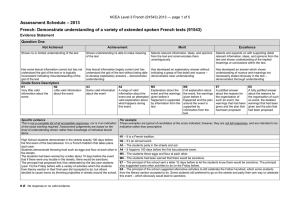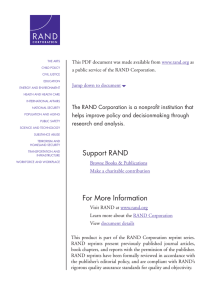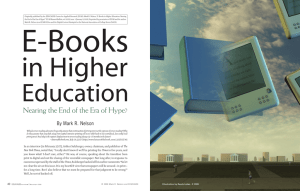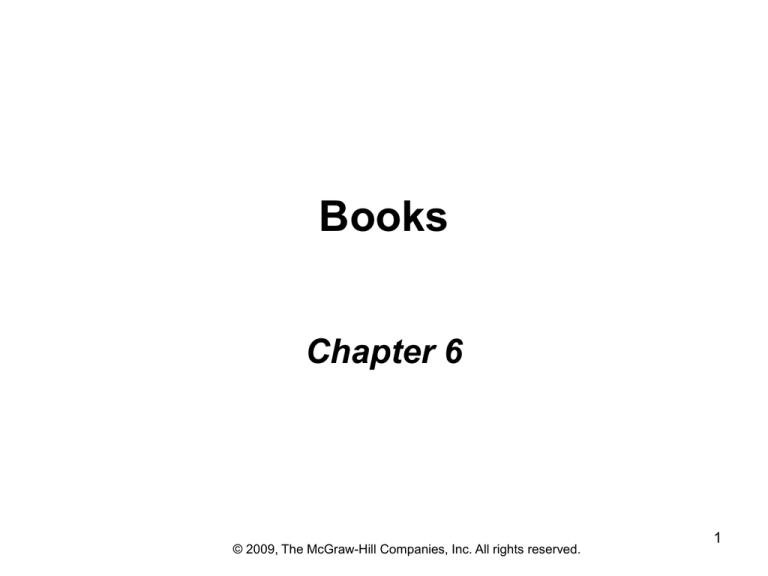
Books
Chapter 6
© 2009, The McGraw-Hill Companies, Inc. All rights reserved.
1
CHAPTER OUTLINE
•
•
•
•
•
•
•
•
History
Books in the Digital Age
Defining Features of Books
Organization of the Book Industry
Ownership in the Book Industry
Producing the Book
Economics
Feedback
2
HISTORY
• Early books were hand-written and lavishly
decorated, often by monks
• Gutenberg printed his first book in about
1455.
– King Henry VIII saw the political potential and
required printers to have government
approval
3
Colonial America
• Early printers were often their own writers
and publishers
• Religious and sentimental themes
dominated
• Political pamphlets became popular
around the time of the Revolution
4
The Penny Press Era
• Changing print technology and increased
literacy
• Public education, penny papers, increase
in libraries
• Uncle Tom’s Cabin
5
The Paperback Boom
• Civil War soldiers
• “Dime novels”
• Pirated editions of European best sellers
6
The Early 20th Century
• Move toward commercialization
– Media conglomerates
– Authors represented by agents
– Increased attention to profit
– Mass audiences and mass marketing tools
7
Postwar Books: Paperbacks and
Consolidation
• Low-priced (25 cents) paperback books
• Subject matter and writing quality varied
widely
• New audience exposed to paperbacks
– More leisure time
– More disposable income
– Renewed interest in education
• Consolidation brought more financial and
management resources to industry
8
The Contemporary Book
Industry
• Consolidation continues
• The Internet changed how books were
sold
• More outlets are selling books
• Publishers cautiously exploring digital
developments
• Content of modern books varied
9
BOOKS IN THE DIGITAL AGE
• The digital revolution has not yet
revolutionized the book industry.
• Introduction of the e-book – technical
problems and limited availability of titles
– e-books have the potential to reshape the
industry
10
Printing on Demand
• Less radical than e-books
• Select the title you want, and it is printed
for you.
• Could result in more special interest books
• Printing on demand and the e-book will
probably never replace traditional books
11
Mobile Books
• e-books are just as portable as traditional
books
– Can be read on a dedicated reader or other
handheld devices
12
User-Generated Content
• Publishers are beginning to explore usergenerated content.
– Wiki novel
– e-books based on individual postings
13
DEFINING FEATURES OF
BOOKS
• The least “mass” of the mass media
• Can have profound impact on society
– Uncle Tom’s Cabin
– Silent Spring
• Among the oldest and most enduring of
mass media
14
ORGANIZATION OF THE BOOK
INDUSTRY
• The book publishing industry can be
divided into three segments
15
Publishers
• Segmented based on target market
–
–
–
–
–
–
–
–
–
–
Trade books
Religious books
Professional books
Book clubs and mail order
Mass market paperback
Elementary and secondary textbooks
Higher education
Audio books
E-books
Other
16
Distributors
• Traditional method
– Publisher to wholesaler/distributor to retailer,
where consumer purchases it
• Online method
– Consumer selects book from web site, and it’s
shopped directly to the consumer from the
seller’s warehouse
17
Retailers
• Big chains dominate traditional booksellers
• Major online retailers are not far behind
• Other retail channels
– College bookstores
– Direct-to-consumer booksellers
• Book clubs
• Mail-order sales
18
OWNERSHIP IN THE BOOK
INDUSTRY
• The book industry is dominated by
conglomerates with interests in other
media.
• The top five companies are Pearson
Publishing, Random House, HarperCollins, Simon & Schuster, and TimeWarner Publishing
19
PRODUCING THE BOOK
• A variety of people work together to
produce a book
20
Departments and Staff
•
•
•
•
Editorial Department
Production Department
Marketing Department
General Administration (Business)
21
Publishing the Book
• Three main sources of book ideas
– Agent recommendations
– Unsolicited books (slush)
– Ideas generated by editors
22
ECONOMICS
• Modest growth in recent years
• Two main sources of income
– Book sales
– Subsidiary rights
• Two main categories of expenses
– Manufacturing the book
– Operating expenses
23
FEEDBACK
• Best-seller lists
– New York Times
– USA Today
– Publisher’s Weekly
• Nielsen BookScan
24
Audiences
• People over 40
• Young adults showing decline in book
reading
• Book reading positively correlated with
income and age
25

